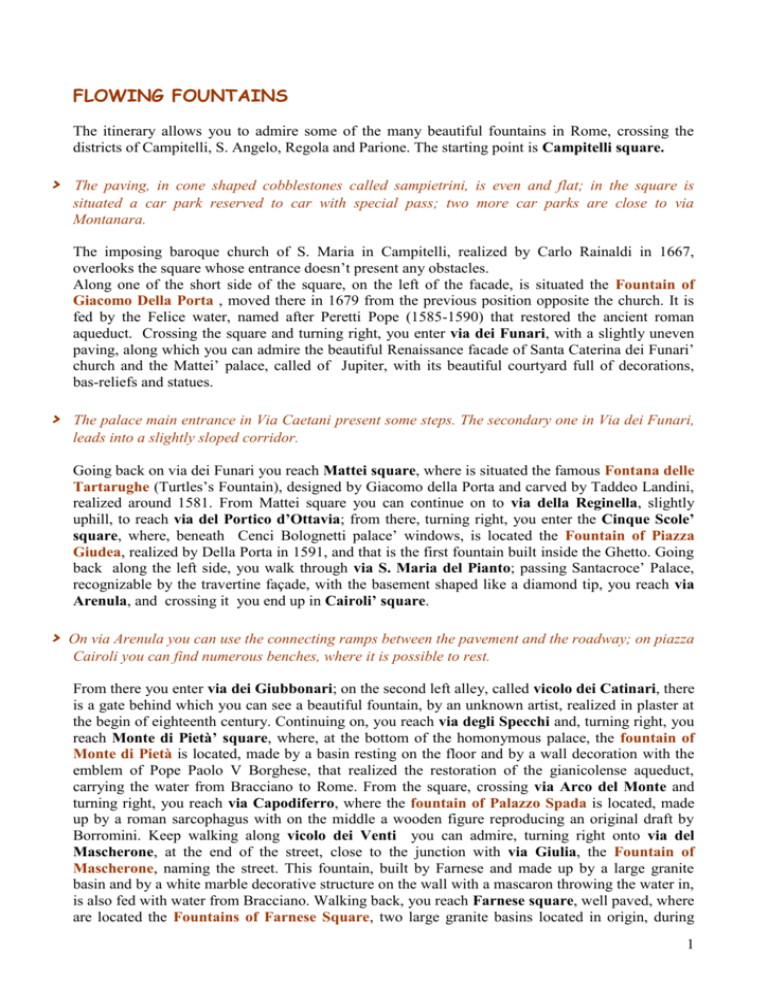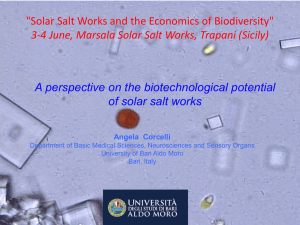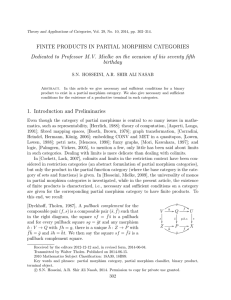flowing fountains - Presidio del Lazio
advertisement

FLOWING FOUNTAINS The itinerary allows you to admire some of the many beautiful fountains in Rome, crossing the districts of Campitelli, S. Angelo, Regola and Parione. The starting point is Campitelli square. > The paving, in cone shaped cobblestones called sampietrini, is even and flat; in the square is situated a car park reserved to car with special pass; two more car parks are close to via Montanara. The imposing baroque church of S. Maria in Campitelli, realized by Carlo Rainaldi in 1667, overlooks the square whose entrance doesn’t present any obstacles. Along one of the short side of the square, on the left of the facade, is situated the Fountain of Giacomo Della Porta , moved there in 1679 from the previous position opposite the church. It is fed by the Felice water, named after Peretti Pope (1585-1590) that restored the ancient roman aqueduct. Crossing the square and turning right, you enter via dei Funari, with a slightly uneven paving, along which you can admire the beautiful Renaissance facade of Santa Caterina dei Funari’ church and the Mattei’ palace, called of Jupiter, with its beautiful courtyard full of decorations, bas-reliefs and statues. > The palace main entrance in Via Caetani present some steps. The secondary one in Via dei Funari, leads into a slightly sloped corridor. Going back on via dei Funari you reach Mattei square, where is situated the famous Fontana delle Tartarughe (Turtles’s Fountain), designed by Giacomo della Porta and carved by Taddeo Landini, realized around 1581. From Mattei square you can continue on to via della Reginella, slightly uphill, to reach via del Portico d’Ottavia; from there, turning right, you enter the Cinque Scole’ square, where, beneath Cenci Bolognetti palace’ windows, is located the Fountain of Piazza Giudea, realized by Della Porta in 1591, and that is the first fountain built inside the Ghetto. Going back along the left side, you walk through via S. Maria del Pianto; passing Santacroce’ Palace, recognizable by the travertine façade, with the basement shaped like a diamond tip, you reach via Arenula, and crossing it you end up in Cairoli’ square. > On via Arenula you can use the connecting ramps between the pavement and the roadway; on piazza Cairoli you can find numerous benches, where it is possible to rest. From there you enter via dei Giubbonari; on the second left alley, called vicolo dei Catinari, there is a gate behind which you can see a beautiful fountain, by an unknown artist, realized in plaster at the begin of eighteenth century. Continuing on, you reach via degli Specchi and, turning right, you reach Monte di Pietà’ square, where, at the bottom of the homonymous palace, the fountain of Monte di Pietà is located, made by a basin resting on the floor and by a wall decoration with the emblem of Pope Paolo V Borghese, that realized the restoration of the gianicolense aqueduct, carrying the water from Bracciano to Rome. From the square, crossing via Arco del Monte and turning right, you reach via Capodiferro, where the fountain of Palazzo Spada is located, made up by a roman sarcophagus with on the middle a wooden figure reproducing an original draft by Borromini. Keep walking along vicolo dei Venti you can admire, turning right onto via del Mascherone, at the end of the street, close to the junction with via Giulia, the Fountain of Mascherone, naming the street. This fountain, built by Farnese and made up by a large granite basin and by a white marble decorative structure on the wall with a mascaron throwing the water in, is also fed with water from Bracciano. Walking back, you reach Farnese square, well paved, where are located the Fountains of Farnese Square, two large granite basins located in origin, during 1 Roman Empire, inside Caracalla’ thermae, and moved here in two phases; they started to function at the begin of the eighteenth century, when the district was supplied with water. The fine drawing of the marble structure in the middle of the basins is by Girolamo Rainaldi. >Farnese Palace’ façade is adorned with stone seats, where it is possible to rest. . From Farnese square, crossing via dei Baullari, you reach Campo de’ Fiori.. > Campo de’ Fiori paving is made in cone shaped cobblestones called sampietrini, quite uneven; in the square during morning hours is carried out a popular fruit and vegetable market On one of the short side of the square, is located Campo de’ Fiori’ fountain. It is a copy of the original fountain that was located in the middle of the square before the Giordano Bruno monument was place there, in 1899. The original was placed opposite the Chiesa Nuova’s façade, in Corso Vittorio Emanuele II, buried in a marble container that makes it quite invisible. The Vergine water, the same that fed Trevi’s Fountain, feeds it. Keep walking along via dei Baullari you reach Corso Vittorio Emnuele II. Crossing the street, using the connecting ramps, you reach San Pantaleo square. Walking then along via della Cuccagna, with on the right side the neoclassical church and on the left one Braschi palace, you reach Piazza Navona. > The square, even and well paved, is a pedestrian area; on the middle part, reachable through a step, there are some stone benches where it is possible to rest.. Piazza Navona is erected on the remains of the Domiziano Emperor’ stadium still maintaining its original shape. During the Middle Age the large stone blocks were removed to build the numerous palaces around the area, like S. Agnes’ church and the one dedicated to San Giacomo degli Spagnoli. Between the Sixteenth and the Seventeenth century the building activity became increased, and culminated with the erection of the Pamphili’ Palace, located on the left side, opposite via della Cuccagna. The settlement and the re-organization of the area is due to Pamphili Pope, including one of the most important roman baroque monument: The Fountain of the Four Rivers, located at the Square centre. Its name comes from the four male figures, representing the four continents’ rivers: the Danubio, seated close to an horse, referring to the Hungarian plains; the Gange, with a oar in his hand and the face of Michelangelo’s Moses located in S. Pietro in Vincoli’ church; the Nile, with his head covered, because of its unknown springs; and the Rio della Plata, with his raised arm. The rocks, where the four giants rest, symbolize the Earth surrounded by the sea, and over them is erected the obelisk, with at the top the Pope’ emblem, a dove with an olive branch. The other two fountain, located at the opposite ends along the square major axis, were there since the end of the Sixteenth century (in the middle only a drinking trough used to be there). The fountain on the square lower end is called “del Moro”; the moor in the middle of the basin is by Bernini. At the opposite end is located the Neptune Fountain, whose decorations were finished at the end of the Nineteenth century. > To go back at the starting point, is advisable walking along Corso Vittorio Emanuele II up to Torre Argentina’ square and from there reach Campitelli’ square. Who wish instead to use public transports or Taxis can reach Corso Rinascimento or Corso Vittorio Emanuele II. 2

